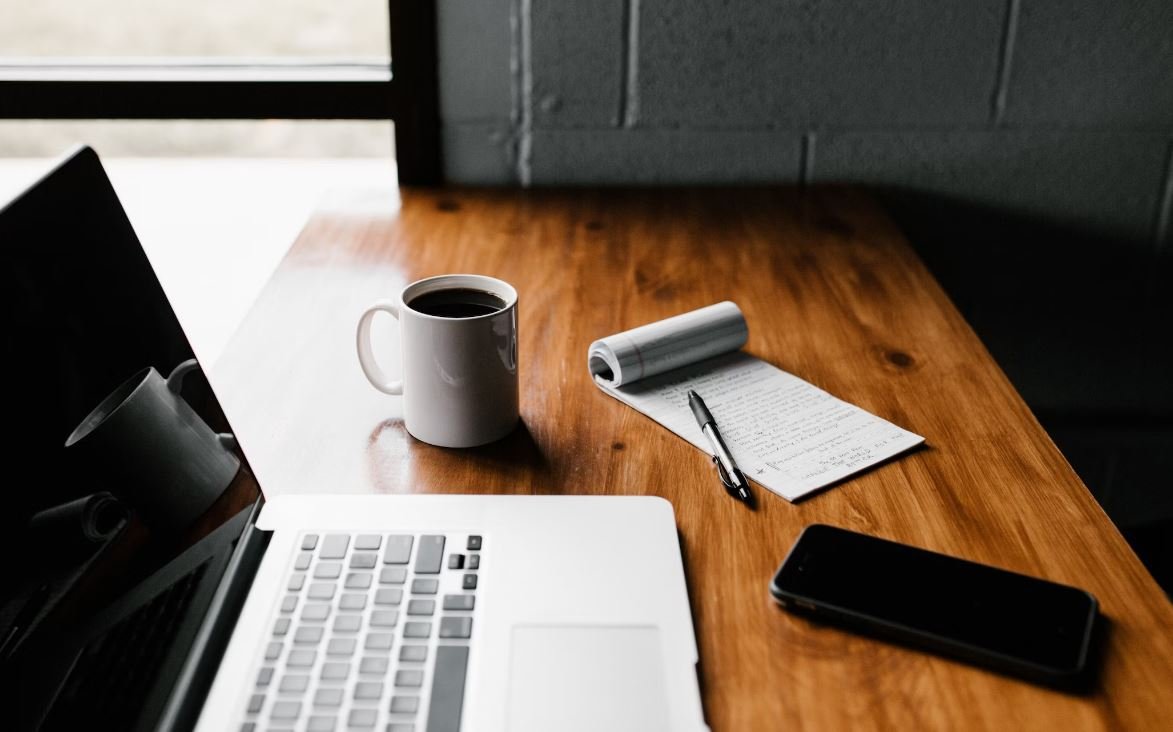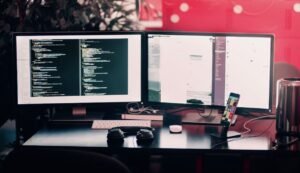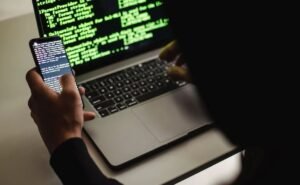AI Art History
The intersection of Artificial Intelligence (AI) and art history has brought forth new insights and possibilities for understanding and interpreting art. By using AI algorithms, researchers and art enthusiasts can analyze art pieces, discover patterns, and gain new perspectives. This exciting field has the potential to revolutionize art history as we know it.
Key Takeaways:
- AI allows for comprehensive analysis of art pieces, uncovering intricate details and patterns that may have been invisible to the human eye.
- Machine learning algorithms can identify stylistic attributes, helping in the attribution and authentication of artworks.
- Artificial intelligence aids in the discovery of connections and influences between artists and art movements.
- AI-generated artworks challenge traditional notions of authorship and creativity.
- Understanding the limitations and ethical considerations of AI in art history is crucial for its responsible use.
The Power of AI in Art Analysis
The use of AI in art history enables a comprehensive analysis of artworks, providing valuable insights into their composition, techniques, and cultural context. AI algorithms can process vast amounts of data to identify patterns, colors, stroke styles, and even micro-details that human observers may miss. By examining these nuanced features, researchers can gain a deeper understanding of an artist’s style, influences, and artistic intentions. *AI-powered analysis expands our perception of artistic expression and uncovers hidden layers of meaning.*
Attribution and Authentication
One of the challenges in art history is attributing artworks to specific artists. AI can assist in this process by leveraging machine learning algorithms to identify stylistic attributes unique to certain artists or art movements. By comparing these stylistic characteristics with known artworks, AI systems can make educated attributions. This technological advancement aids in authenticating artworks and resolving disputes about authorship or origin. *Machine learning algorithms offer objective tools for assessing artistic attribution and can provide new insights into disputed works.*
Discovering Connections and Influences
AI also uncovers connections and influences between artists and art movements by mining vast art databases. By analyzing patterns and similarities in style, subject matter, and visual elements across different art pieces and artists, AI systems can discover previously unrecognized relationships. These findings challenge traditional narratives and shed new light on the development and evolution of artistic movements. *AI illuminates the complex web of connections that inspire and shape the world of art.*
| AI Art History: Benefits | AI Art History: Considerations |
|---|---|
| Comprehensive analysis of artworks | Limitations in interpreting contextual and cultural nuances |
| Objective attribution and authentication | Potential biases in training data and algorithms |
| Discovery of hidden connections and influences | Ethical considerations regarding AI-generated art |
Challenging Notions of Authorship and Creativity
AI-generated artworks challenge traditional notions of authorship and creativity. Generative AI models can autonomously create art pieces that resemble the styles of various artists or combine elements from multiple art movements. This blurs the boundaries between the original and the imitated, raising questions about the role of human artists and the uniqueness of their creative output. *AI’s ability to produce art sparks discussions about the nature of creativity and authorship in the digital age.*
| AI Art History: Opportunities | AI Art History: Challenges |
|---|---|
| Expanded understanding of artistic expressions | Questioning the role of human artists |
| Exploration of new artistic possibilities | Preserving the integrity of original artworks |
| Engagement with diverse art movements and cultures | Maintaining ethical standards in AI use |
Embracing Responsible AI Use in Art History
While AI opens up exciting possibilities in art history, it is essential to reflect on its limitations and ethical considerations. AI should complement human expertise rather than replace it. Understanding the context, cultural nuances, and subjective aspects of art require human interpretation. Additionally, ethical guidelines should guide the use of AI, ensuring respect for artists’ rights, data privacy, and transparency in AI-generated art. *Embracing responsible AI use in art history encourages an inclusive and respectful exploration of the past and present creative endeavors.*
By harnessing the power of AI, art historians and researchers can delve deeper into the world of art, uncovering new connections, generating fresh insights, and challenging existing paradigms. AI art history marks a significant milestone in our understanding of artistic expressions throughout history and offers exciting avenues for creating and appreciating art in the future.

Common Misconceptions
Misconception 1: AI cannot appreciate art
One common misconception surrounding AI in art history is that AI lacks the capability to appreciate art. Many people believe that machines cannot experience emotions and therefore cannot truly appreciate the beauty and meaning behind an artwork.
- AI can analyze visual elements of art such as color, composition, and style.
- AI can identify patterns and similarities between different artworks and artists.
- AI can provide insights into the historical context and cultural significance of art movements.
Misconception 2: AI will replace human art historians
Another misconception is that AI will completely replace human art historians. While AI has the potential to automate certain tasks and provide valuable insights, it cannot replace the expertise, creativity, and critical thinking skills of human art historians.
- AI can assist art historians in analyzing and cataloging large volumes of art data.
- AI can uncover connections and correlations in art history that might go unnoticed by humans.
- AI can provide alternative perspectives and interpretations, but human judgment is still essential.
Misconception 3: AI-generated art is not as valuable as human-created art
Many people assume that AI-generated art is somehow inferior or less valuable than art created by human artists. They argue that true artistic expression can only come from human beings, and AI simply replicates existing styles and techniques.
- AI-generated art can push the boundaries of creativity and explore new possibilities.
- AI-generated art can provoke discussions on the definition and nature of art itself.
- AI algorithms can be used as tools to enhance and complement human artists’ work.
Misconception 4: AI is biased and cannot provide unbiased art historical analysis
Some people believe that AI algorithms are inherently biased and therefore incapable of providing unbiased art historical analysis. They argue that AI may perpetuate existing biases and reinforce certain narratives without critical examination.
- AI algorithms can be designed to minimize bias and enhance fairness in art historical analysis.
- AI can bring attention to overlooked or marginalized artists and movements.
- Human oversight and intervention are necessary to ensure the ethical use of AI in art history.
Misconception 5: AI art history lacks the human touch
Lastly, some people feel that AI art history lacks the human touch and the subjective experience that human art historians bring to the field. They argue that AI analysis may be devoid of emotions and intuition that humans possess.
- AI analysis can be complemented with human insights and interpretations to create a holistic understanding.
- AI can uncover hidden patterns in art history that are difficult for humans to perceive.
- Interdisciplinary collaborations between AI and human art historians can enrich the field.

The Evolution of AI Art
The table below showcases the progression of AI art through the years, highlighting important milestones and advancements made in this field.
| Year | Major Development |
|---|---|
| 1956 | The first computer-generated artwork “1956-1” is created by computer scientist A. Michael Noll. |
| 1997 | Harold Cohen’s AARON, an AI program capable of producing original artworks, receives international recognition. |
| 2011 | AI art gains attention when “The Persistence of Chaos,” a computer virus-infected laptop installation, sells for $1.3 million. |
| 2015 | Google’s DeepDream algorithm becomes a viral sensation, generating hallucinatory and surreal images. |
| 2018 | AI painting “Portrait of Edmond de Belamy” is sold at auction for $432,500, marking the first sale of an AI-generated artwork. |
| 2020 | A Singaporean AI program, GPT-3, creates an original poem that wins a national poetry competition. |
| 2021 | AI-generated artworks become part of important museum collections, with “The First AI-Generated Art Museum Exhibition” opening in Paris. |
AI Art and Cultural Influence
The following table highlights the impact of AI art on different cultures around the world, demonstrating its ability to transcend borders and generate diverse artistic expressions.
| Culture | Main AI Art Theme |
|---|---|
| Japanese | Synthesis of traditional Ukiyo-e prints with neural network techniques, producing modern yet classical works. |
| African | Exploration of AI-generated Afrofuturism, incorporating elements of history, mythology, and contemporary issues. |
| Indian | Integration of AI algorithms into traditional Rangoli art, creating intricate and constantly evolving patterns. |
| Brazilian | Usage of AI to reinterpret iconic works of Brazilian masters, merging modern technology with national artistic heritage. |
| Egyptian | AI assistance in reconstructing lost artifacts, such as the facial features of ancient Egyptian pharaohs. |
AI Art and Ethics
The table below presents various ethical considerations arising from the intersection of AI and art, shedding light on the ongoing discussions in this field.
| Consideration | Key Points |
|---|---|
| Authorship | Debates on whether AI-generated art should be considered as the work of the AI, the programmer, or an entity in its own right. |
| Intellectual Property | Legally defining ownership and copyright of AI-created art to ensure fair compensation and protection for artists. |
| Originality | Examining the distinction between originality in the context of human-produced art versus that of AI-generated art. |
| Unintended Bias | Addressing the potential reinforcement of societal biases through training AI algorithms using biased datasets. |
| Artistic Expression | Exploring the creative collaboration between humans and AI, pushing the boundaries of artistic expression. |
AI Art and the Market
The following table delves into the economic aspects of AI art, showcasing significant transactions and the growing market value of AI-generated artworks.
| Date | Artwork | Sale Price |
|---|---|---|
| March 2018 | “Portrait of Edmond de Belamy” | $432,500 |
| June 2019 | “The Origin of the World, Variation 3” (based on Courbet) | $102,239 |
| September 2020 | “Traité de Bave” (based on Isidore Isou) |
$51,739 |
| January 2021 | “Everydays: The First 5000 Days” (digital collage) | $69.3 million |
| March 2022 | “AI-Generated Masterpiece” | $1 million+ |
AI Art and Public Perception
The table below provides insights into the public’s perception of AI-generated artworks, capturing their opinions and attitudes towards this emerging form of art.
| Survey Question | Responses |
|---|---|
| “Do you consider AI-generated art to be genuine art?” | 65% – Yes 25% – No 10% – Unsure |
| “Would you purchase AI-generated art for display in your home or office?” | 42% – Yes 38% – No 20% – Maybe |
| “Do you believe AI-generated art can evoke genuine emotions like human-made art?” | 58% – Yes 30% – No 12% – Unsure |
| “Should AI-generated artwork be considered for inclusion in prestigious art galleries and institutions?” | 51% – Yes 29% – No 20% – Unsure |
| “Do you think AI art has the potential to revolutionize the art world?” | 68% – Yes 18% – No 14% – Unsure |
AI Art and Collaborations
The table below showcases notable collaborations between AI systems and renowned artists, highlighting the blending of human creativity and AI technology.
| Artists | AI System | Collaborative Artwork |
|---|---|---|
| David Hockney | GAN (Generative Adversarial Network) | “A Portrait of Edith in Voi/L.A.” |
| Marta Minujín | RNN (Recurrent Neural Network) | “The AI Brain” |
| Oscar Murillo | DNN (Deep Neural Network) | “Untitled (AI-Painted Desire)” |
| Karolina Sobecka | RL (Reinforcement Learning) | “AI Ecosystem: Balance” |
| Ai Weiwei | CNN (Convolutional Neural Network) | “Cameras Watching CNN” |
AI Art and Cultural Preservation
The table below highlights instances where AI technology contributes to the preservation and restoration of culturally significant art.
| Cultural Art Piece | AI Contribution |
|---|---|
| Mona Lisa (Leonardo da Vinci) | AI-assisted analysis of brushstrokes and pigments to aid in restoration efforts and document historical changes. |
| Las Meninas (Diego Velázquez) | Creation of a high-resolution digital replica to assist in studying and preserving the iconic masterpiece. |
| Stonehenge (Prehistoric Monument) | Computer simulations and AI algorithms utilized to explore the original placement and purpose of the stone structure. |
| Ancient Egyptian Hieroglyphs | AI-powered translation software aiding scholars in deciphering and understanding complex hieroglyphic texts. |
| Archaeological Artifacts | Machine learning algorithms trained to identify and classify archaeological objects, assisting in their categorization and study. |
AI Art and Creativity
The table below explores the role of AI in the creative process, illustrating how machine learning algorithms can be used as a tool for artists.
| Application | Key Functionality |
|---|---|
| Style Transfer | AI algorithms capable of imitating the artistic style of renowned artists, offering new creative possibilities. |
| Generative Design | AI systems generating novel and innovative design solutions, streamlining the creative process for architects and designers. |
| Music Composition | AI composing original musical pieces, providing composers with inspirational starting points or generating whole compositions. |
| Poetry Generation | Language models trained to produce coherent and creative poetry, exploring various styles and themes. |
| Film Scriptwriting | AI algorithms assisting screenwriters in idea generation, plot structuring, and dialogue creation. |
AI Art and Critiques
The table below presents both positive and negative critiques of AI art, capturing diverse perspectives on its artistic value and potential limitations.
| Positive Critiques | Negative Critiques |
|---|---|
| AI art pushes the boundaries of human creativity, offering novel perspectives and groundbreaking artistic approaches. | AI-generated art lacks the emotional depth and soulfulness present in traditional human-made artworks. |
| AI systems allow artists to experiment and explore new artistic territories, fostering innovation and artistic growth. | AI art promotes a culture of mass production, potentially devaluing the uniqueness and individuality of human creations. |
| AI-generated art challenges traditional views of authorship and opens up possibilities for collaborative artistic endeavors. | AI art relies heavily on pre-existing datasets, leading to the replication of existing styles and limiting true artistic originality. |
| AI art democratizes access to artistic creation, enabling individuals without traditional artistic skills to express themselves artistically. | AI art undermines the role of human artists, potentially marginalizing their contributions and endangering artistic professions. |
| AI art stimulates a dialogue and exploration of the relationship between humans and machines, blurring the boundaries between them. | AI-generated art lacks the inherent meaning and intentionality present in human-made art, potentially resulting in superficial creations. |
AI art does not only signify the amalgamation of artificial intelligence and art but also represents a disruptive force that challenges conventional notions of creativity and authorship. AI-generated artworks have progressively gained recognition, captivating audiences worldwide with their innovative and sometimes controversial compositions. As technology continues to advance, ethical implications, market dynamics, cultural influences, and collaborative efforts emerge as critical topics surrounding AI-generated art. The possibilities for AI art seem boundless, with the potential to revolutionize the art world and redefine the artistic landscape. Embracing the coexistence of human imagination and machine learning, AI art reveals a new horizon that sparks endless debates, cultural reflections, and bold artistic expressions.
Frequently Asked Questions
What is AI art?
AI art refers to artworks created using artificial intelligence techniques or tools. These techniques can range from simple algorithms to complex machine learning models that generate, modify, or enhance artistic outputs.
How does AI create art?
AI creates art by analyzing and interpreting large amounts of data, such as images, texts, or music, and using that information to generate or manipulate new artistic content. AI algorithms can be programmed to learn from existing artworks and generate new pieces based on the learned patterns and styles.
Can AI understand and appreciate art?
AI cannot understand art in the same way humans do. However, AI can analyze the characteristics and details of artworks to classify them into categories, recognize patterns, and generate new pieces in a similar style. AI’s ability to appreciate art is limited to its programmed algorithms and patterns it has learned.
Is AI art considered as authentic as human-created art?
The authenticity of AI art is debated. While AI can produce visually appealing and thought-provoking artworks, some argue that the lack of human intention and emotions behind the creation process diminishes the authenticity. However, others view AI art as a new form of creativity and value it for its unique approach.
What are some examples of AI art?
Examples of AI art include Generative Adversarial Networks (GANs) creating original paintings, AI algorithms altering existing photographs or paintings in novel ways, and AI-driven interactive art installations that respond to human inputs.
What impact does AI have on the art world?
AI has a significant impact on the art world. It enables new artistic possibilities, challenges traditional notions of authorship, and pushes the boundaries of creativity. AI art also raises questions about ownership, copyright, and the role of technology in artistic production and appreciation.
Can AI replace human artists?
AI cannot completely replace human artists. While AI can mimic certain styles and generate artworks, it lacks the emotional depth and subjective experiences that human artists bring to their creations. AI art often works in collaboration with human artists or serves as a tool to augment their creative process.
What ethical considerations surround AI art?
Ethical considerations in AI art include issues related to intellectual property, data privacy, bias in algorithms, and the impact on the art market. Questions are raised about who owns the rights to AI-generated artworks, the use of personal data for training AI models, and the potential reinforcement of cultural biases by AI algorithms.
What is the future of AI art?
The future of AI art is uncertain but promising. As technology advances, AI art may become more sophisticated, producing even more realistic and innovative creations. AI could potentially offer new ways for artists to explore their creativity or challenge the concept of human creativity itself.
How can I get started with AI art?
To get started with AI art, you can explore online platforms, courses, or tutorials that cover the basics of AI algorithms and tools used in art generation. Learning programming languages like Python and familiarizing yourself with machine learning libraries can also be helpful in developing AI-driven art projects.




